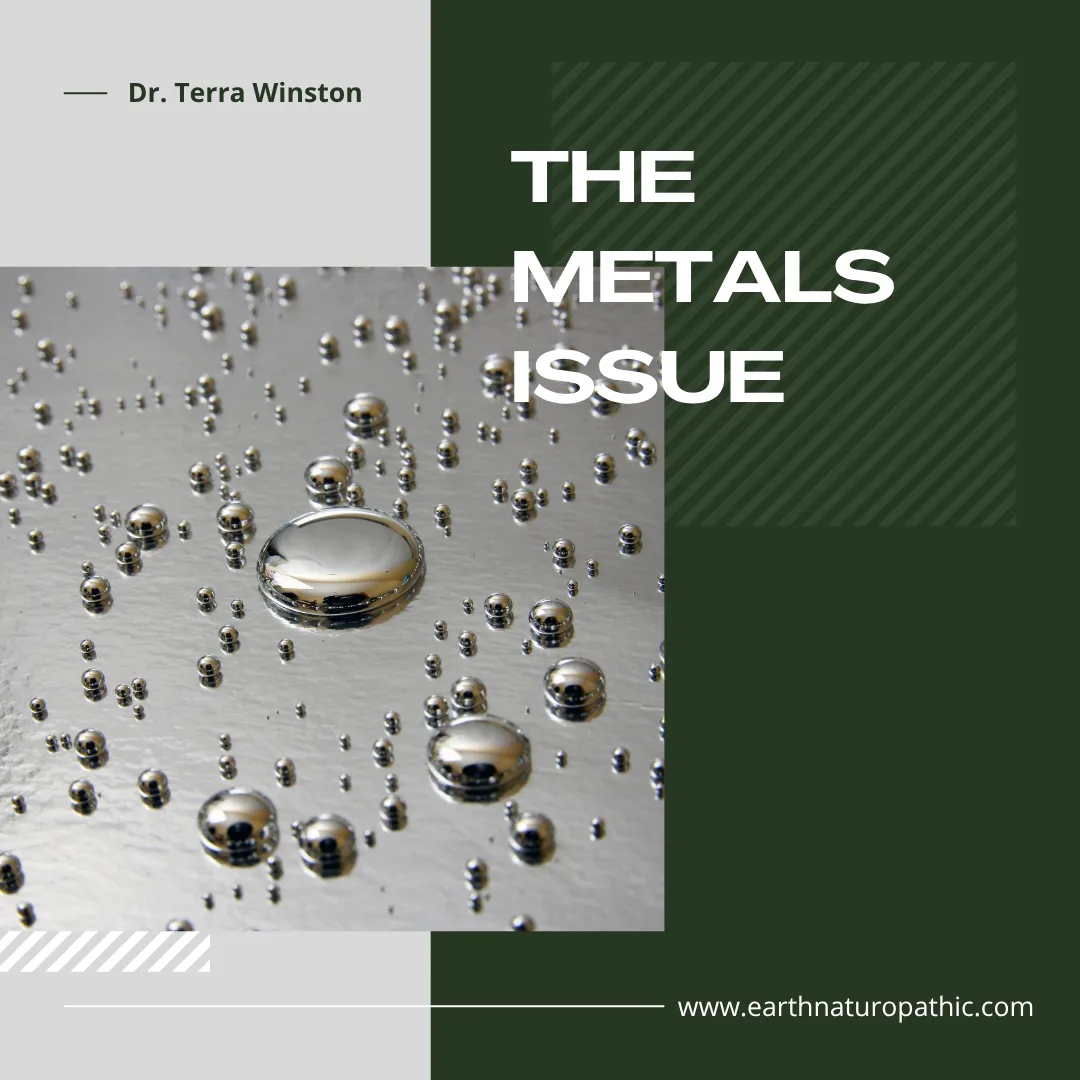
The Metal Issue
There has been a notable increase in clients interested in chelation therapy over the last year in my practice. Whether its people who are informed and seeking me out to receive IV chelation therapy for cardiovascular health or its folks already in my practice with stubborn symptoms due to heavy metal toxicity, I’ve seen it all.
I figured if this is affecting so many people right now, it might be interesting to you or someone you love too.
Here are a few things to know about heavy metal toxicity, cardiovascular disease and using chelation therapy to improve your overall health while reducing your toxic burden.
What Is Chelation Therapy?
Sometimes, harmful metals like lead or mercury can get into our bodies from the environment (think- old paint, seafood, drinking water, supplements and even foods). These metals displace vital minerals and cause problems that make us feel unwell. Chelation therapy is the process used to remove these metals from our bodies.
Chelation is commonly used to improve cardiovascular health by stabilizing plaques in the blood vessels and reducing overall inflammation. Our current understanding on why this works is that chelation therapies with Ca-EDTA convert the fluffier, more dangerous plaques, into harder, more stable plaques; improve nitrous oxide production (which promotes vasodilation) and reduce oxidative stress (which is what leads to plaque in the first place). It does NOT reduce calcifications, as was once believed.
How Does Chelation Therapy Work?
Chelation therapy uses special medicines that bind toxic metals and shuttle them out of the body. Think of chelators like magnets that are really drawn to toxic metals like lead and mercury but less drawn to good minerals like calcium and magnesium.
What Chelators Do You Use?
We use a combination of chelators that cover a broad spectrum of metals under the assumption that everyone has some heavy metal exposure and its better to be safe than sorry. What we want to avoid is mobilizing metals without safely shuttling them out of the body. The strongest chelators used in IV chelation protocols are generally centered around DMPS (Dimercapto-propane sulfonate) and CaEDTA (Calcium ethylenediaminetetraacetic acid).
DMPS is especially good at removing mercury and arsenic. It’s like a magnet for these metals, helping to pull them out of the body and reduce the strain on vital organs.
CaEDTA is great for removing lead and reducing inflammation in the blood vessels.
If using chelation for cardiovascular health only, it's still important to test for heavy metals to ensure the treatments can be done safely.
How Does Chelation Therapy Work?
There are two major ways to receive chelation therapy, intravenously or orally. Rectal suppositories are also an option for EDTA.
Intravenous Chelation (IV Chelation):
Pros: This method is very effective because the chelators go directly into your bloodstream. It works quickly and can remove a lot of metals at once. This is typically the most efficient way to chelate.
Cons: You need to visit a doctor’s office or clinic for this treatment and it does involve inserting a small flexible catheter into a vein. This would be considered a more invasive procedure. The process takes 1-3 hours per treatment and is generally done 1-2x per week depending on the individual needs of the client.
Oral Chelation:
Pros: This is more flexible because you can swallow a pill or liquid from anywhere and don't need doctor’s supervision with each dose. There are no needles required.
Cons: This process generally takes longer to see results because the medicines must be absorbed by your digestive tract in order to be effective. Absorption rates depend on the health of the individual's digestive tract and how many doses are taken daily. Doses high enough to see efficient results may not be tolerable and may cause uncomfortable digestive discomfort. You will also need to take the medicine and supporting supplements several times a day and often on an empty stomach, making it challenging to plan your meals and outings.
Why Choose One Over the Other?
Some people might choose IV chelation if they need to remove metals quickly or if they have a lot of heavy metals in their bodies. IV chelation is also by far the best option for arterial plaques because the medicine is delivered right to the source of the problem. Others might prefer oral chelation if they want something they can take without needing to visit the doctor as often.
Important Things to Remember:
Chelation therapy should always be done under the care of a doctor. The doctor will decide which type of chelation and which chelator is best for you.
While chelation therapy can help remove harmful metals, it’s not a cure-all. It’s important to also avoid exposure to heavy metals in the first place.
Common sources of metal include dental fillings, drinking water, food, supplements and industrial products.
While chelation can stabilize atherosclerosis plaques, it does not prevent them from forming. A comprehensive treatment plan is recommended to reduce systemic inflammation and ensure the best response to treatment.
If you’re curious about chelation therapy for you or a loved one, I’d be happy to chat. Please request a free prospective client interview using this link.